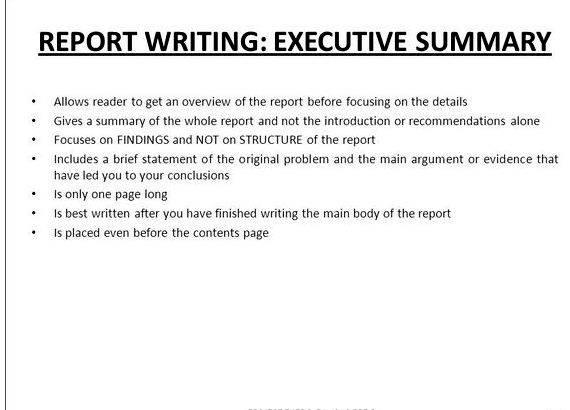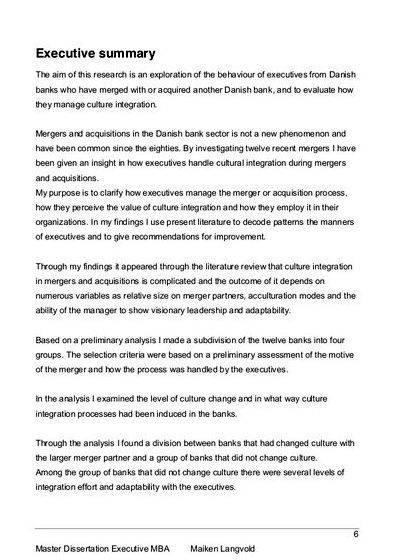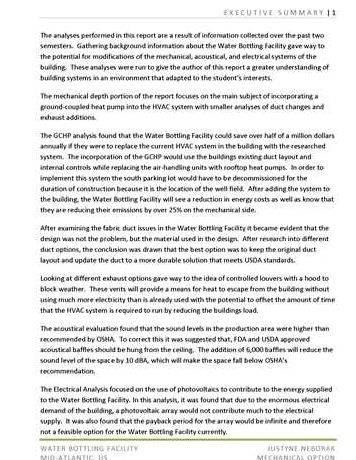Being asked to write an executive summary, whether for a policy paper, pamphlet, briefing paper or report, may be a daunting prospect if you’ve never done it before.
However, ask a few questions, and keep a few simple rules in your mind and it becomes much more straightforward. This page sets out the questions to ask, whether of yourself or someone else, and a few warnings and conventions to bear in mind.
Executive Summary Content
Two key questions you need to ask before you start
- Who is the intended audience of my executive summary?
- Which of the contents of the paper that I am summarising do they really need to know?
These questions are important because they tell you what you need to include in the executive summary, so let’s unpack them a little:
The Intended Audience
As with all writing projects it is important to know your audience . The intended audience for an executive summary may be quite different from the intended audience for the longer document, whether it’s a policy paper, report, or something else.
The executive summary serves several possible purposes.
People may read the executive summary to find out if they need to read the full report. This group may include people within the organisation and outside, but the report is likely to touch on what they do every day. They will often be subject experts; they just need to know if there is anything new that they should read. This group will be looking for a broad summary of the contents of the wider paper.
People may want to find out if they’d find the full report interesting and relevant. even if not strictly essential. Again, this group is likely to be subject experts, but may also include analysts searching for a particular ‘angle’ on the subject.
This group will also welcome a straightforward summary of the contents.
They may read the executive summary instead of the full report. It’s this group that you really need to worry about, because they’re likely to include the Board or executive team of your organisation, as well as journalists. What goes into the executive summary, therefore, is the message that they’re going to take away, that may well be spread more widely. For these people, the executive summary is their window onto the subject and it needs to be transparent, not opaque, if they are to understand it.
Think about your intended audience: who do you want to read your executive summary and why?
Don’t worry about other people who might read it; this is your intended audience. the people to whom you or your immediate line manager are going to send the summary. If the summary is for publication, which groups do you most want to read it?
What Does Your Intended Audience Need to Know?
Once you have identified your intended audience, you can then think about what they need to know or do as a result of reading your paper. This can be split into two parts:
First categorise the document by whether it needs action or is for information only. This will determine the language that you use.
Next, you need to identify what, when they have finished reading, are the key messages that you want your audience to have in their heads.

Information and concepts that they did not have before.
A good way to think about the key content is to imagine meeting your boss or CEO in the car park or at the coffee machine. What three key points about your document would you want to tell them?
Work on reducing your key messages down to three, or at the most, five bullet points of one or two sentences. Working on them before you start writing will mean that they are absolutely clear in your head as you write.
Writing your Executive Summary
Some organisations have very clear structures that are used for documents like executive summaries and others are more open.
Before you start, check whether you need to work within a specific structure or not. For example, if you are writing a summary of an academic report for submission, you may have a word count restriction, or need to remain within one side of paper.
When you are writing your executive summary, you should keep your intended audience in mind at all times and write it for them.
If your audience includes your boss or Chief Executive think: how much do they already know, and how much do you need to explain?
If your audience includes journalists, you probably need to explain everything. If it’s simply as a summary of a paper because you have to publish one, then you simply need to summarise the paper.
If you find yourself getting bogged down in the detail at this stage, it’s a good idea to talk to someone else about what to include.
The language you use needs to be fairly formal, whether or not the summary is intended for publication. If in doubt, check out our page: Formal and Informal Writing .
Broadly, an executive summary, as you might expect, summarises the main points of the underlying paper, and draws out the key points. It usually has three sections: introduction, main body and conclusion.
The introduction sets the scene, and explains what the paper is about, including what action needs to be taken as a result. It doesn’t need to be more than one or two sentences. For an internal paper, you might write:
This paper explains the findings of the research about [subject] and its relevance to the organisation. It notes five key findings, and makes three recommendations for action within the organisation. You are asked to take note of these, and decide whether the recommendations should be implemented.
For an executive summary of a published paper, it is not unusual for the first paragraph to be more attention-grabbing.
For example, from a recently-published report about green energy and the internet:
For the estimated 2.5 billion people around the world who are connected to the internet, it is impossible to imagine life without it.
The internet has rewoven the fabric of our daily lives – how we communicate with each other, work and entertain ourselves – and become a foundation of the global economy.
[Source: Greenpeace, Clicking Clean ].
This example still sets the scene: the importance of the internet, but the idea here is to keep people reading, not just provide information. Again, it’s all about your audience and what they need or want.
The main body of the text outlines the key findings and/or recommendations from the report or paper to which this is the summary. The main section needs to focus on the interesting and most relevant bits of the report.
Most importantly, the main section of the executive summary needs to stand alone without the reader having to refer to the main body of the report or policy paper. This is worth checking by getting someone who doesn’t know much about the subject to read it over for you.
Finally, you need a conclusion. which outlines the take-home messages or action needed from the person reading the report. Bullet points are a useful form to highlight the key points, and this is where your three to five messages come in.
Once you’ve finished, check it against our checklist to make sure that you’ve covered everything.
Checklist for writing an executive summary
- Have you kept in mind the audience at all times?
- Have you addressed it to them?
- Have you met any word count or structural requirements?
- Have you clearly outlined the key messages and any action needed as a result?
- Does the executive summary make sense by itself, without the report attached?
Final Words of Warning
An executive summary cannot be all things to all people. You only have a few hundred words. You need to focus firmly on your intended audience and their needs. Other people may find it useful; your intended audience relies on it.






 Do young park dissertation writing
Do young park dissertation writing Le visiteur eric emmanuel schmitt dissertation proposal
Le visiteur eric emmanuel schmitt dissertation proposal Phd comics dissertation committee invitation
Phd comics dissertation committee invitation Phd comics dissertation committee guidelines
Phd comics dissertation committee guidelines Rutgers university library dissertations on motivation
Rutgers university library dissertations on motivation






